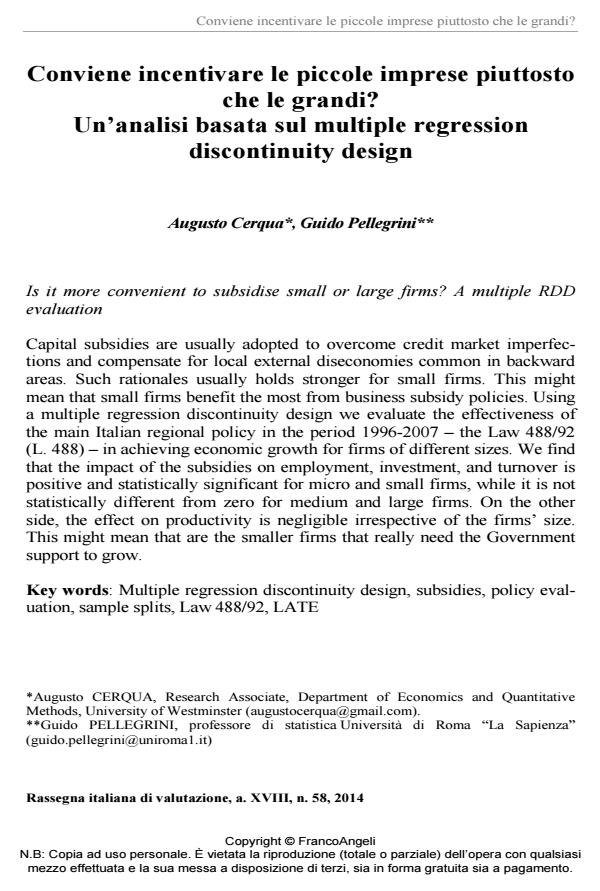Conviene incentivare le piccole imprese piuttosto che le grandi? Un’analisi basata sul multiple regression discontinuity design
Titolo Rivista RIV Rassegna Italiana di Valutazione
Autori/Curatori Augusto Cerqua, Guido Pellegrini
Anno di pubblicazione 2015 Fascicolo 2014/58
Lingua Italiano Numero pagine 23 P. 197-219 Dimensione file 361 KB
DOI 10.3280/RIV2014-058009
Il DOI è il codice a barre della proprietà intellettuale: per saperne di più
clicca qui
Qui sotto puoi vedere in anteprima la prima pagina di questo articolo.
Se questo articolo ti interessa, lo puoi acquistare (e scaricare in formato pdf) seguendo le facili indicazioni per acquistare il download credit. Acquista Download Credits per scaricare questo Articolo in formato PDF

FrancoAngeli è membro della Publishers International Linking Association, Inc (PILA)associazione indipendente e non profit per facilitare (attraverso i servizi tecnologici implementati da CrossRef.org) l’accesso degli studiosi ai contenuti digitali nelle pubblicazioni professionali e scientifiche
Capital subsidies are usually adopted to overcome credit market imperfections and compensate for local external diseconomies common in backward areas. Such rationales usually holds stronger for small firms. This might mean that small firms benefit the most from business subsidy policies. Using a multiple regression discontinuity design we evaluate the effectiveness of the main Italian regional policy in the period 1996-2007 - the Law 488/92 (L. 488) - in achieving economic growth for firms of different sizes. We find that the impact of the subsidies on employment, investment, and turnover is positive and statistically significant for micro and small firms, while it is not statistically different from zero for medium and large firms. On the other side, the effect on productivity is negligible irrespective of the firms’ size. This might mean that are the smaller firms that really need the Government support to grow.
Parole chiave:Multiple regression discontinuity design, subsidies, policy evaluation, sample splits, Law 488/92, LATE
Augusto Cerqua, Guido Pellegrini, Conviene incentivare le piccole imprese piuttosto che le grandi? Un’analisi basata sul multiple regression discontinuity design in "RIV Rassegna Italiana di Valutazione" 58/2014, pp 197-219, DOI: 10.3280/RIV2014-058009